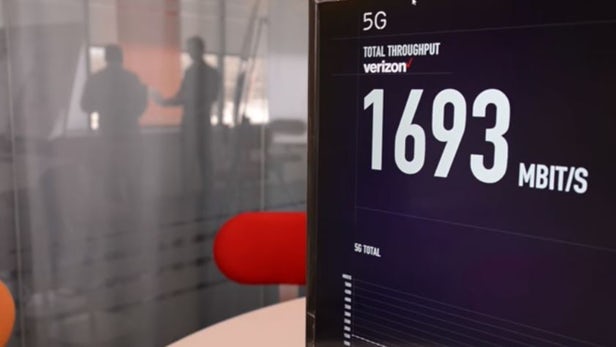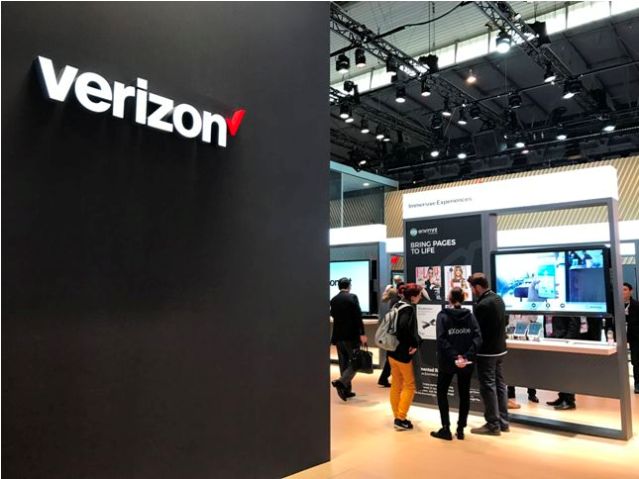Verizon has been in a race with AT&T to be the first carrier to offer 5G, and it has sort of already claimed that title. The telecom giant launched a pre-standard 5G network in the fall of 2018, deciding to move forward with its own technology rather than wait for slow moving standards bodies to ratify a final specification. Competitors claim it’s not “real 5G,” and fret about compatibility issues. Meanwhile, Verizon was out front and moving ahead.
A few months after Verizon, AT&T deployed its standards-based mobile 5G NR in a handful of areas across the U.S, but Verizon wants its 5G to offer impeccable speeds with low latency. To meet those demands, Verizon will initially deploy its 5G network on millimeter wave spectrum (mmWave). And while mmWave will undoubtedly offer the fastest 5G experience, it has its flaws. Verizon will initially roll out its 5G service on 28 GHz spectrum. One of the problems with using the high-band spectrum is that it does not easily cover a large area, and penetration is a serious issue. Over the next several years, Verizon will build out its 5G network around the country using small cells, and will eventually deploy service on a mid- and low-band spectrum, with speeds of 900 Mbps and higher, as well as crystal clear video conference with the first fixed-wireless customer in Texas.
Verizon will initially roll out its 5G service on 28 GHz spectrum. One of the problems with using the high-band spectrum is that it does not easily cover a large area, and penetration is a serious issue. Over the next several years, Verizon will build out its 5G network around the country using small cells, and will eventually deploy service on a mid- and low-band spectrum, with speeds of 900 Mbps and higher, as well as crystal clear video conference with the first fixed-wireless customer in Texas.
For the next several years Verizon’s 5G service will piggyback off its massive 5G network. Expect to see 5G service in larger cities and busy places like stadiums and airports, but you will be unlikely to see the service in the suburbs and rural areas for years to come.
Although Verizon will release standards-based mobile 5G (called 5G NR) in 2019, it has yet to provide details on the exact location. And when it comes to mobile hardware, there’s not a lot of news here. Currently, Verizon has confirmed only a handful of mobile devices with 5G modems, including the Moto Z3 with a 5G compatible Moto Mod, scheduled to be released in the first half of 2019, and an upcoming Samsung-branded 5G smartphone, also scheduled to be released in the first part of 2019. There will also be a 5G mobile hotspot, with partner Inseego, creating a MiFi 5G hotspot due to be released at some point in 2019. Verizon will likely be the first carrier to roll out fixed 5G. In October, the carrier rolled out pre-standard fixed 5G – a service it calls Verizon 5G Home – in parts of Sacramento, LA, Houston and Indianapolis. The service is available for $50 for current Verizon subscribers and $70 for those who want standalone service. Verizon says there are no data caps with the service, which will require a technician to install the equipment. Expect to see the pre-standard 5G replaced with 5G NR. Verizon then plans to deploy fixed 5G to additional locations across the country in 2019.
Verizon will likely be the first carrier to roll out fixed 5G. In October, the carrier rolled out pre-standard fixed 5G – a service it calls Verizon 5G Home – in parts of Sacramento, LA, Houston and Indianapolis. The service is available for $50 for current Verizon subscribers and $70 for those who want standalone service. Verizon says there are no data caps with the service, which will require a technician to install the equipment. Expect to see the pre-standard 5G replaced with 5G NR. Verizon then plans to deploy fixed 5G to additional locations across the country in 2019.
Since Verizon already has fixed 5G service in four cities, it makes sense it would have the hardware. The carrier partnered with Inseego to release its first 5G home router, and according to Verizon, the Inseego R1000 Router with 4×4 MIMO boasts greater data throughput and supports mesh nodes for expanded coverage.





